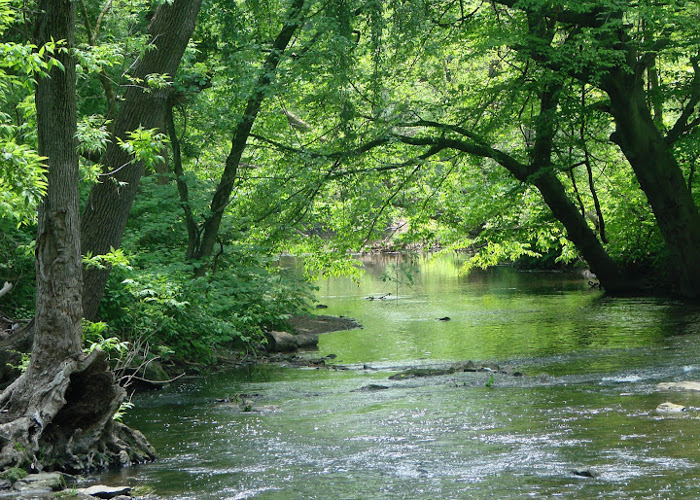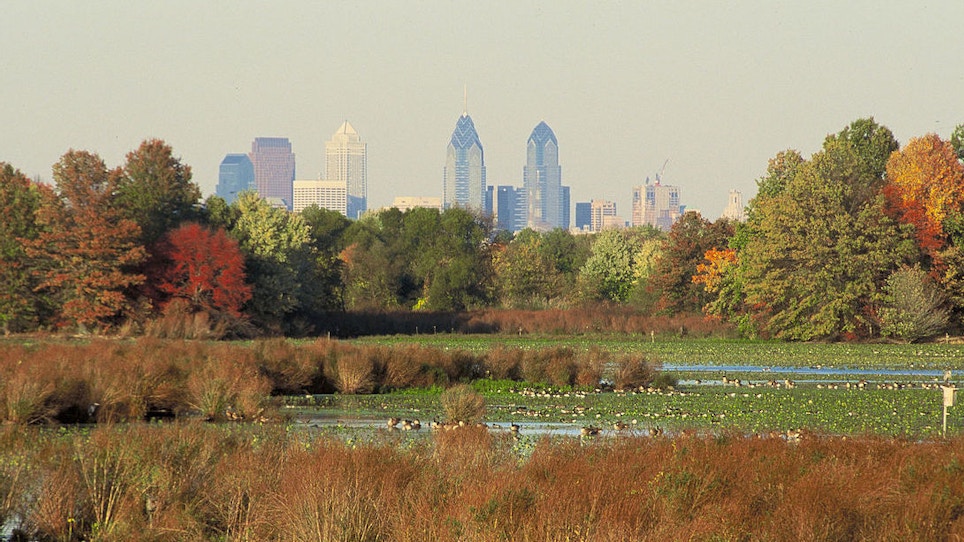Featured photo: John Heinz National Wildlife Refuge (U.S. Fish and Wildlife Service)
Why would a city like Philadelphia ever consider urban deer hunting within its city limits? Because when deer are preserved unnaturally and protected from predation, they ultimately cause damage to themselves and the natural life around them.
Such is the case in John Heinz National Wildlife Refuge, a 993-acre tract of public land located in Philadelphia and surrounding townships. At this stage hunting inside the refuge is not legal, but a plan has been proposed to legalize bowhunting for deer in an effort to thin the deer population. Of the tract proposed for hunting, 63 acres is within Philadelphia’s borders.
This proposal was made by the U.S. Department of Interior’s Fish and Wildlife Service and is supported by the Pennsylvania Game Commission. Currently, wildlife officials say the deer population in the refuge far exceeds a healthy 29 animals per square mile. According to the Philadelphia Inquirer, the plan states, “The damage caused by deer to forest regeneration on John Heinz National Wildlife Refuge is evident. The longer-term implications are that the refuge’s native forested areas could lose the ability to replace themselves through time.”
Heinz is one of the few refuges in the nation that does not allow hunting, Prior to 1972, deer hunting was allowed on the Heinz refuge and, since the public parcel was no longer available to hunters, deer populations have surged. Wildlife officials have already been culling deer to reduce the herd, with the venison going to local food banks.

The parcels proposed for deer hunting boarder Darby Creek, pictured here. Photo: Mjp1305, from Wikimedia Commons.
If the proposed plan is adopted, hunters will be chosen through a lottery system with preference given to first-time youth hunters.
On April 24, the John Heinz National Wildlife Refuge posted the proposal to its Facebook page and asked its community for comment. In the refuge’s post text, hunters were cited as the primary source of funding for wildlife conservation:
“Hunters are some of the largest contributors to conservation in the U.S. In fact, the sale of hunting licenses has been the primary source of funding for many conservation lands in the refuge system. Additionally, hunting contributes to the management of Whitetailed deer populations on wildlife refuges.”
Hunters fund wildlife conservation through hunting license sales and the self-imposed Pittman-Robertson Act. Through this legislation, an 11 percent excise tax on sporting arms and ammunition sales generate funding that's then appropriated to the Secretary of the Interior. Next, this revenue is distributed across U.S. states to fund wildlife conservation projects. These projects can range from the acquisition and improvement of wildlife habitat to wildlife research.
Philadelphians Weigh in on Urban Deer Hunting
Feedback from those who commented on the post represented a mixed bag. Some where in favor of the proposal, while others were solidly against it. Others expressed concern for the safety of those using the refuge for recreation other than hunting.
Marilyn Schrubb posted, “Deer population control is important for animals and environment!”
But Stella Eileen felt the proposal was a terrible idea. “It goes against everything I think of when I think of what a wildlife refuge should be. This is cruel. Has PETA heard about this?”
All A. Façade was concerned about safety. “Ugh. Sounds scary for people walking around. My husband and I frequent this place.”
Still, there were others who endorsed the idea.
“In Pennsylvania, whitetail deer, native trout and other species were obliterated until hunters and people who fish put a stop to the carnage and developed what is now the Pennsylvania Game and Fish commission,” wrote Joseph Slavin. “There are other private/public groups like Trout Unlimited that contribute to the continuing abundance of wildlife in Pennsylvania. Without them, there would be no deer or trout in our state. We do not live in a 'natural' world. If we did, there would be no deer and we would not have a deer problem.”
Marge Whatley cited concerns about the over-population of deer and its impact on plant life. “State parks have controlled hunting periods to control deer populations without any residual harm to the area. Over population of deer destroys trees and other plants, thus destroying the habitats and food sources for other animals in (the) area.”
Finally, Jim Boettger, weighed in with a little humor, “I guess you can’t call yourselves a wildlife 'refuge' anymore." He’s a musician who, according to his Facebook page, is also known as “Cadillac Jim.”
John Heinz National Wildlife Refuge at Tinicum is America's First Urban Refuge and was established in 1972 for the purpose of preserving, restoring, and developing the natural area known as Tinicum Marsh, to promote environmental education, and to afford visitors an opportunity to study wildlife in its natural habitat. The refuge is a green respite nestled within the urban setting of the city of Philadelphia.






